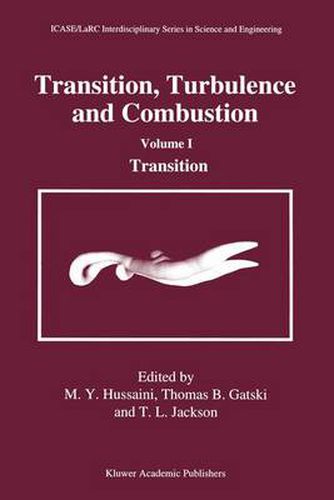Readings Newsletter
Become a Readings Member to make your shopping experience even easier.
Sign in or sign up for free!
You’re not far away from qualifying for FREE standard shipping within Australia
You’ve qualified for FREE standard shipping within Australia
The cart is loading…






This title is printed to order. This book may have been self-published. If so, we cannot guarantee the quality of the content. In the main most books will have gone through the editing process however some may not. We therefore suggest that you be aware of this before ordering this book. If in doubt check either the author or publisher’s details as we are unable to accept any returns unless they are faulty. Please contact us if you have any questions.
These two volumes contain the proceedings of the Workshop on Transition, Turbulence and Combustion, sponsored by the Insti tute for Computer Applications in Science and Engineering (ICASE) and the NASA Langley Research Center (LaRC), during June 7 to July 2, 1993. Volume I contains the contributions from the transi tion research, and Volume II contains the contributions from both the turbulence and combustion research. This is the third workshop in the series on the subject. The first was held in 1989, the second in 1991, and their proceedings were published by Springer-Verlag under the titles Instability and Transition (edited by M. Y. Hussaini and R. G. Voigt) and Instability, Transition and Turbulence (edited by M. Y. Hussaini, A. Kumar and C. L. Streett) respectively. The objectives of these workshops are to expose the academic community to current technologically important issues of transition, turbulence and combustion, and to acquaint the academic commu nity with the unique combination of theoretical, computational and experimental capabilities at LaRC. It is hoped these will foster con tinued interactions, and accelerate progress in elucidating the funda mental phenomena of transition, turbulence and combustion. The research areas of interest in transition covered the full range of the subject: linear and nonlinear stability, direct and large-eddy simulation and phenomenological modeling of the transition zone.
$9.00 standard shipping within Australia
FREE standard shipping within Australia for orders over $100.00
Express & International shipping calculated at checkout
This title is printed to order. This book may have been self-published. If so, we cannot guarantee the quality of the content. In the main most books will have gone through the editing process however some may not. We therefore suggest that you be aware of this before ordering this book. If in doubt check either the author or publisher’s details as we are unable to accept any returns unless they are faulty. Please contact us if you have any questions.
These two volumes contain the proceedings of the Workshop on Transition, Turbulence and Combustion, sponsored by the Insti tute for Computer Applications in Science and Engineering (ICASE) and the NASA Langley Research Center (LaRC), during June 7 to July 2, 1993. Volume I contains the contributions from the transi tion research, and Volume II contains the contributions from both the turbulence and combustion research. This is the third workshop in the series on the subject. The first was held in 1989, the second in 1991, and their proceedings were published by Springer-Verlag under the titles Instability and Transition (edited by M. Y. Hussaini and R. G. Voigt) and Instability, Transition and Turbulence (edited by M. Y. Hussaini, A. Kumar and C. L. Streett) respectively. The objectives of these workshops are to expose the academic community to current technologically important issues of transition, turbulence and combustion, and to acquaint the academic commu nity with the unique combination of theoretical, computational and experimental capabilities at LaRC. It is hoped these will foster con tinued interactions, and accelerate progress in elucidating the funda mental phenomena of transition, turbulence and combustion. The research areas of interest in transition covered the full range of the subject: linear and nonlinear stability, direct and large-eddy simulation and phenomenological modeling of the transition zone.